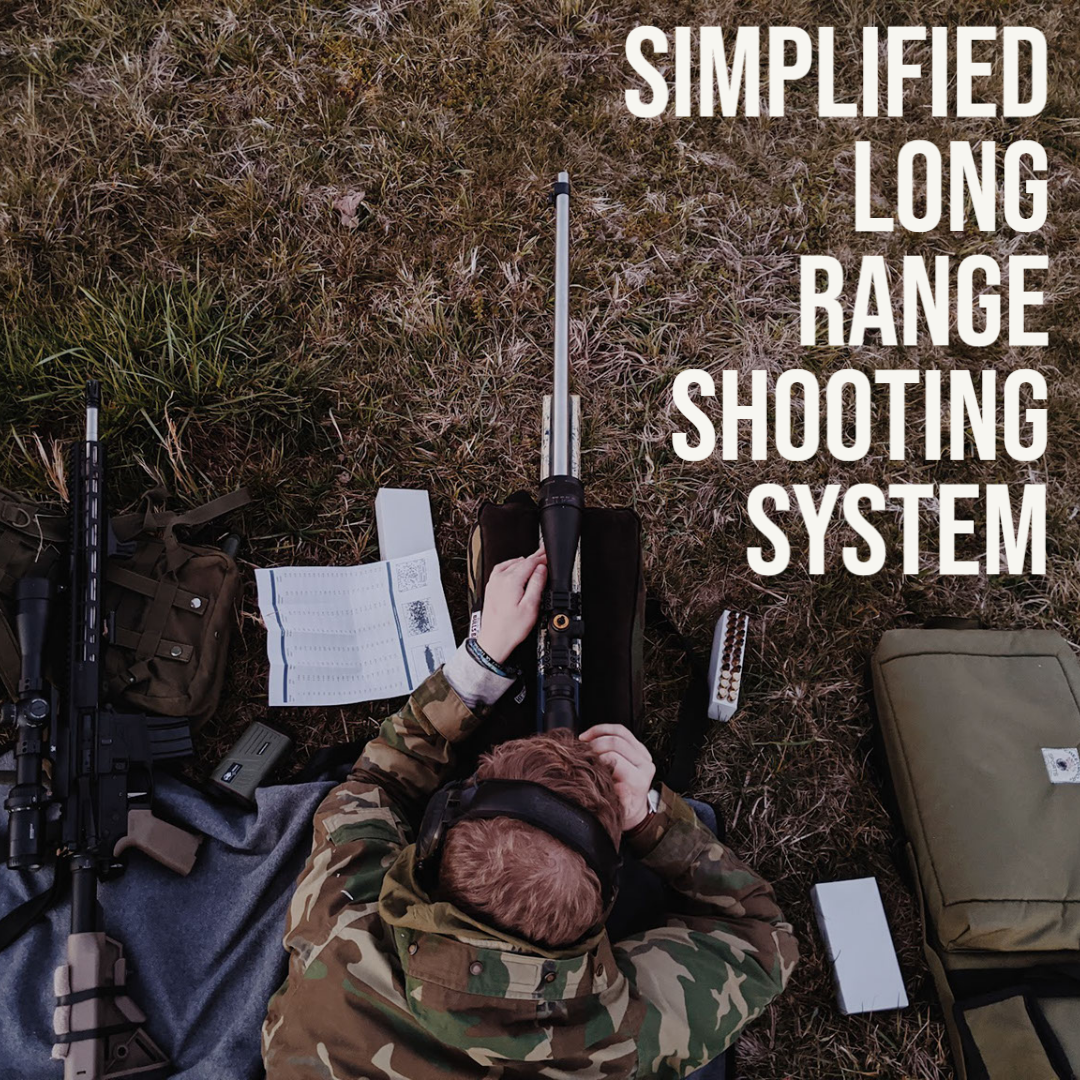Cart
Your cart is empty
Looks like you haven’t added anything yet, browse our sale below!
Continue Shopping
If you're interested in getting into long range shooting, here is what I would focus on for best result with the least input.
Before you blame the rifle, make sure you've properly torqued your scope mount, dialed out parallax, and built a good body position with solid rifle-to-shoulder connection. The key to long range shooting is controlling the variables you can and reducing variation wherever possible. The shooter and their inputs are typically are the largest source of variation. Work on you. With that said, here's the system:
Learning to set up a stable prone position should be your first priority as you get into this. You can build a 1/4 MOA gun, and shoot 2 MOA because of your poor connection with the rifle. I learned this from Phillip Velayo and it’s the single best thing I could’ve done for improving me as a shooter. Go watch his YouTube videos on rifle to shoulder connection and shooters checklist. Before you start lobbing bullets down range, memorize the shooters checklist, learn to build a good position, and dry fire it A LOT. You will be far better at controlling recoil, improving impact recognition and follow-up time, and you’ll probably see those groups tighten up. Note: If you can’t spend the coin on a good bipod just yet, just get a sandbag. A stable front base will make this all so much easier.
Reloading is expensive. time consuming, and has a huge knowledge barrier. Here’s a really simple test. Go buy one box of every match brand ammunition in your area. That typically means 20 rds of each. Bore zero your gun, shoot 4 groups of five rounds at 100 yds, from a solid position (that you’ve been practicing). These don’t have to be centered, just needs to be consistent. This is a good time to work your shooter’s checklist with live fire. One of those boxes will run best through your gun. There are many variables that go into this that we don’t care about, you just need to know that it works. So buy 300-400 rounds of it, and that’s all you shoot until it’s gone. If you notice significantly decreased precision, consider running the test again.
LR does not have to be an algebra quiz every time you shoot. Once you have confirmed dope, you shouldn’t have to do calculations in the field. DOPE stands for data on previous engagements. Here’s the quickest way to get it without a chronograph: You should have your gun zeroed at 100 yds, you just need two more data points. Run a ballistic software (I use JBM) with a guesstimate of your velocity. Shoot at two other distances (recommend 200 and 400) using that DOPE, make corrections as needed to get a zeroed 5 rd group. Go back to that software and "true your velocity". Change that velocity input until the three data points you collected (closest) match those predicted by the software. Now that you know your velocity., you just need to 1. confirm it, 2. record the actual corrections made, and 3. tape that to your gun. When you shoot at distance, that’s what you reference.
The truth is, there are too many variables for you to account for. By the time you calculate everything, the variables have changed. But here’s the great news: you’ve got a rifle connection that allow you to better control recoil, you’ve got DOPE that should get you within an MOA, usually less. 95% of the time you can get an acceptable hit first time with DOPE. The other 5% can be spotted and adjusted for a quick follow-up. Keep practicing the process of choosing target, building a shooting position, dialing or holding to DOPE, taking shot, and making adjustments if needed. Once you’ve gone through that first batch of ammo you get to decide. Is that enough? If your system is working, there’s not much reason to work on it. If you’re like me, you’ll want to keep shooting smaller groups at farther distances. If so, check out our next blog post.
Looks like you haven’t added anything yet, browse our sale below!
Continue Shopping
Leave a comment
This site is protected by hCaptcha and the hCaptcha Privacy Policy and Terms of Service apply.